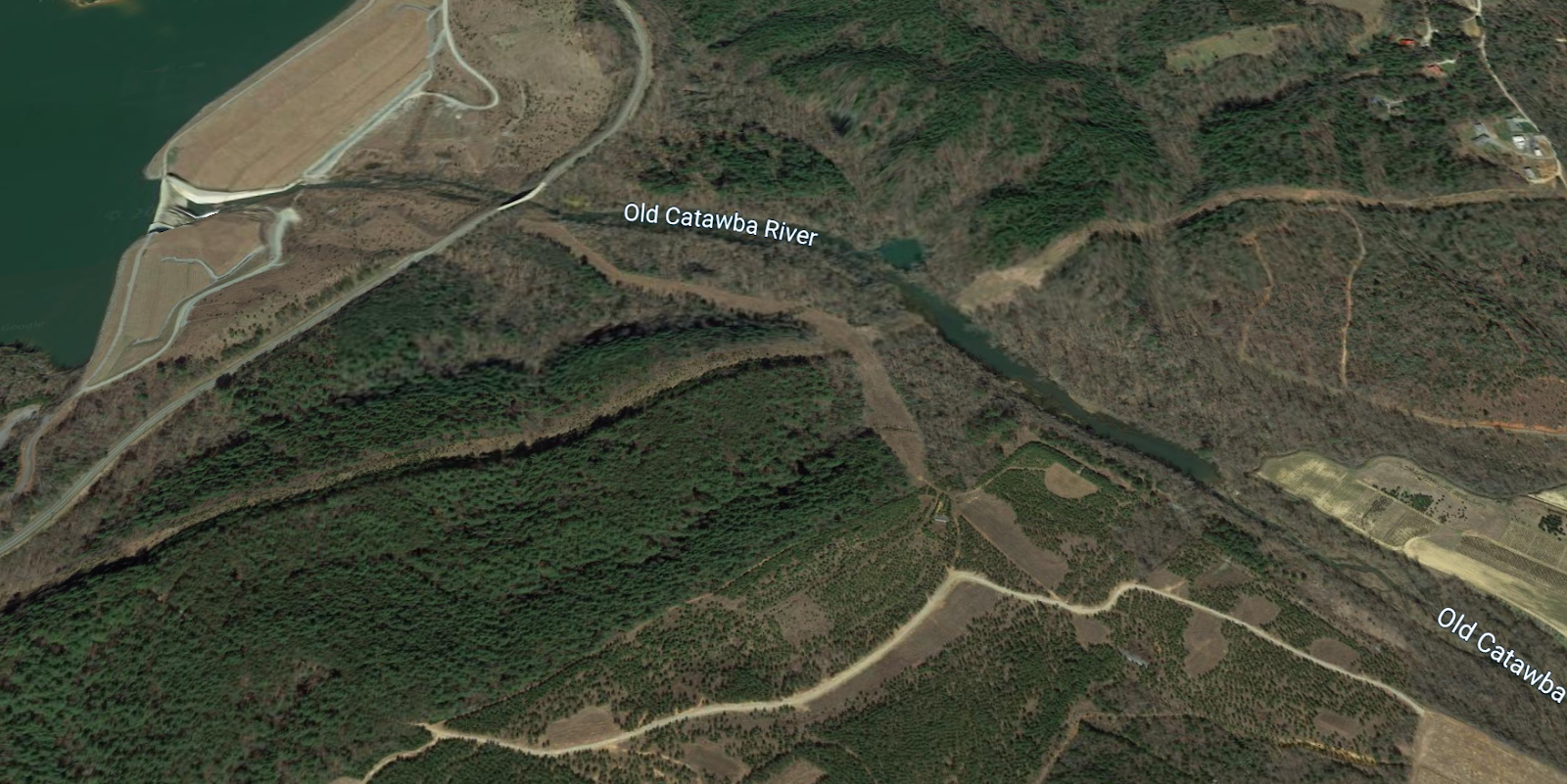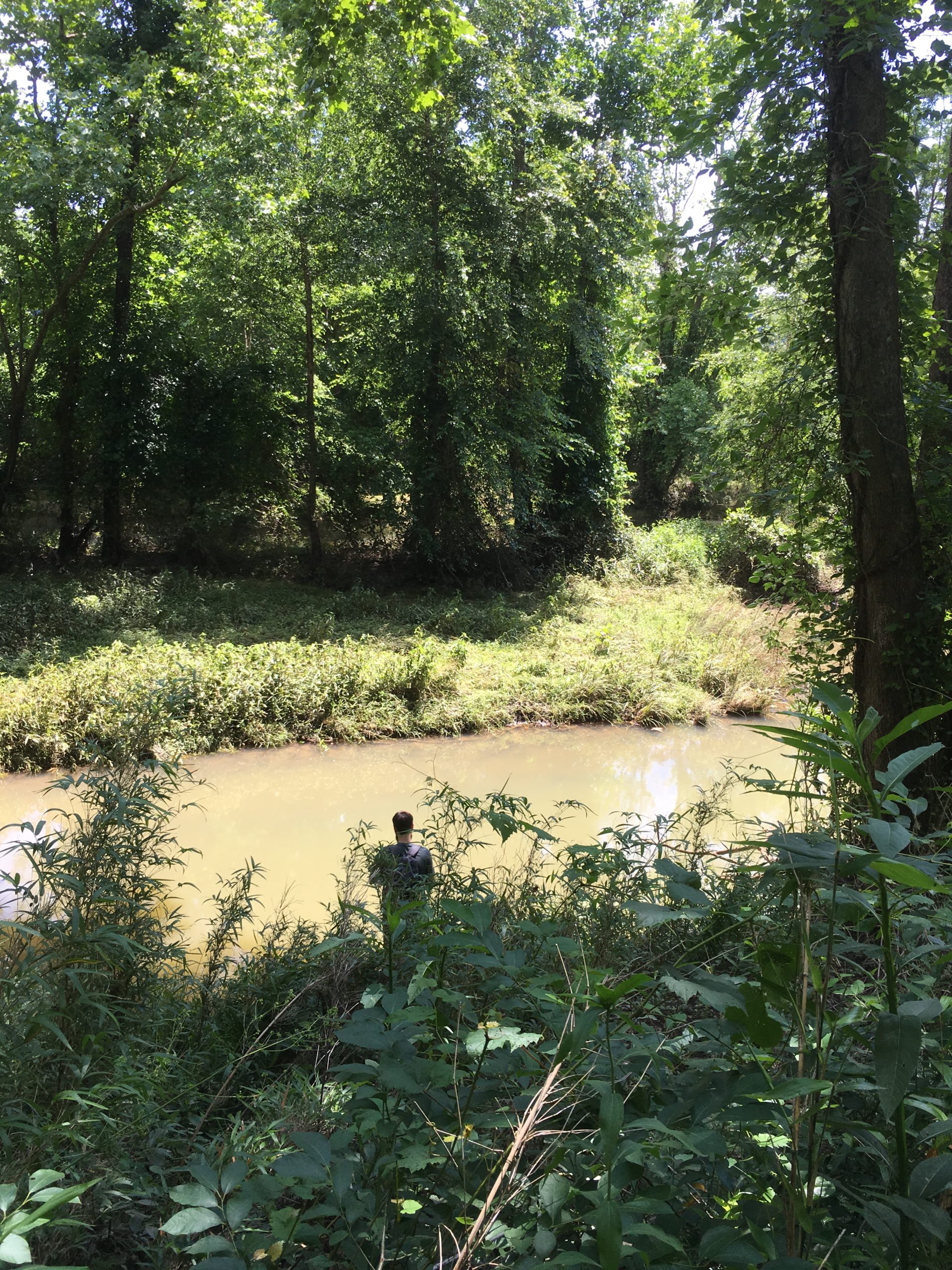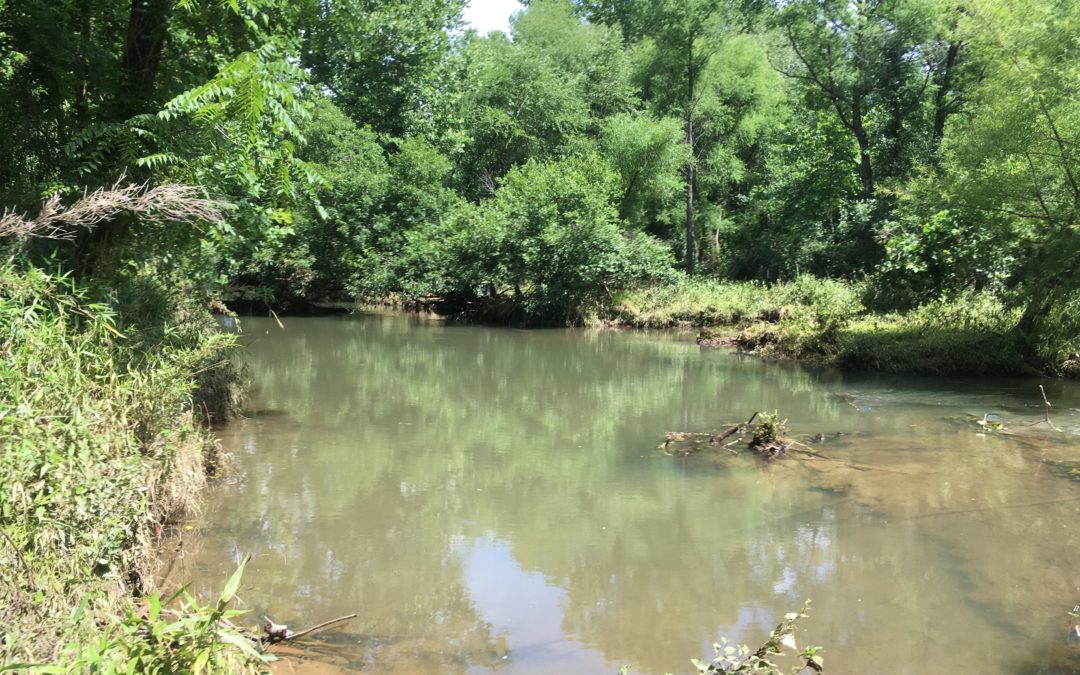This October, Foragable Community invited Kip Mumaw and Jane Margaret Bell of Ecosystem Services to visit Catawba Run as the first step in developing a plan for ecological assessment and restoration of the Old Catawba River at Catawba Run. Our Resilience Partner, Laura Lengnick, led Kip and Jane Margaret, on a two hour tour of the Catawba River reach that flows along the eastern side of the property. Stretching approximately 4,500 feet, this reach will be used to study current and changing river conditions that will help inform future river restoration methods. Based on some initial observations, and using our vision of ecological restoration, resilience, and positive community impact as guiding principles, Kip and Jane Margaret developed a proposed restoration plan of this reach.

The Catawba River Dam, pictured here at the top left corner, has been managed historically for recreation on Lake James. The Old Catawba River, pictured above, is the site of the reach at Catawba Run. A new dam management plan incorporates river health – perfect timing for the team at Catawba Run to monitor river health and plan restoration efforts!
The reach is just below the Catawba River Dam that is owned and operated by Duke Energy. For over 50 years, the dam has been managed to promote recreation on Lake James. River health was not a top priority. In 2018, a new management plan was developed to better balance recreational needs with the needs of the river. Before this shift, the river suffered from long periods of no flow, or stagnation. Because of this new agreement, we are in a unique position to monitor the Old Catawba River as it’s flow shifts from intermittent to continuous for the first time in 50 years! Wildlife, plant life and water quality are all likely to change as the river comes back to life and we want to document this change as part of our work to restore the river.
Riparian buffers along the Old Catawba River were another main focus of Ecosystem Services staff visit to Catawba Run. A riparian buffer is a vegetated area near a stream which is usually forested, and helps shade and partially protect the stream from the impact of adjacent land uses – in this case Catawba Run. Healthy buffers act as critical habitat resources for wildlife while also holding stream banks intact during major weather events. During a weather event, they have the ability to slow the flow of overland, floodplain flow and reduce the levels of nutrients and pollutants in the water by acting as a powerful filter zone between the larger landscape and the flooded river. These vegetated areas also supply organic or woody material to stream systems that often become a source for in-stream habitat for aquatic species, and can host native food species that benefit wildlife. If we begin to monitor and restore the health of these riparian buffers, we could see a major positive shift in the overall health of the river, surrounding wildlife, and Catawba Run as a whole!

Kip and Jane Margaret Discuss Plantlife, Riparian Species, and Erosion
With the help of Ecosystem Services staff, we have begun to identify land management steps that will restore healthy river habitat, increase the resilience of the river system to flooding rains, and slowly return the river to more natural conditions closer to before the dam was constructed. To begin the long process of river restoration, Foragable Community has partnered with the Lake James Environmental Association to measure the health of the river ecosystem in the reach at two locations. This agreement is exactly the kind of win-win partnerships we like best at Foragable Community: LJEA’s measurements will extend their existing network of monitoring sites in the Lake James watershed, help us all understand how the river ecosystem is responding a return to continuous water flow, and provide the data we need to guide the restoration of the Old Catawba River at Catawba Run.

Kip Takes Notes on the Banks of the Old Catawba River
Catawba Run is 275 acres of old growth, unmanaged regrowth, and sustainable pine plantation located in the Piedmont region of North Carolina, near Nebo, just west of Morganton. This land is the setting for Foragable Community’s next demonstration of our shared values: to use ecological management practices and resilience principles to restore the health and wellbeing of degraded landscape, and concurrently have a positive impact on the lives of people who participate in this vision of redemption and renewal.
The Catawba Indian Nation are the descendants of the original inhabitants of land that we call Catawba Run. The Catawba, or “the people of the river” pronounced yeh is-WAH h’reh in their native tongue, were farmers, renowned potters, and stewards of the land in most of the Piedmont of South Carolina, North Carolina, and Southern Virginia. Foragable Community acknowledges that Catawba Run is on this ancestral land.
Ecosystem Services is a consulting company out of Charlottesville, VA, who help clients understand and improve natural resources. They believe that proper natural resource management and intervention can strengthen or restore the benefits that communities enjoy from their ecosystems. Their natural resource consulting services span a wide range of activities including assessment, mapping, agricultural monitoring and more. Their local offices are located in Asheville, NC.
The Lake James Environmental Association is a non-profit organization in Western North Carolina whose mission is to protect and enhance the health and natural beauty of Lake James and its watershed.

